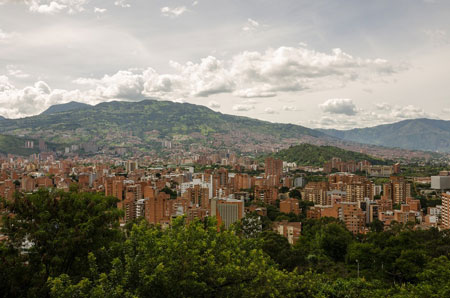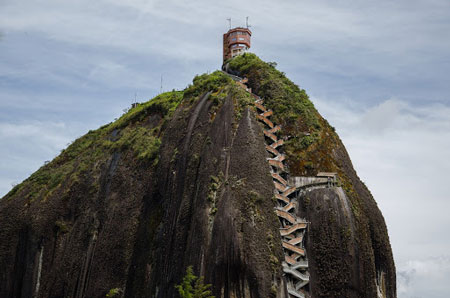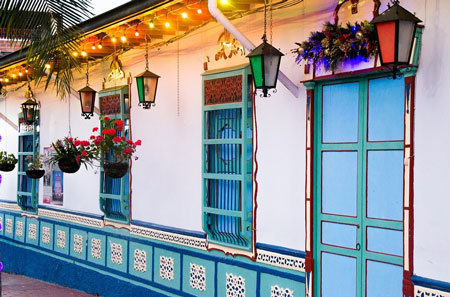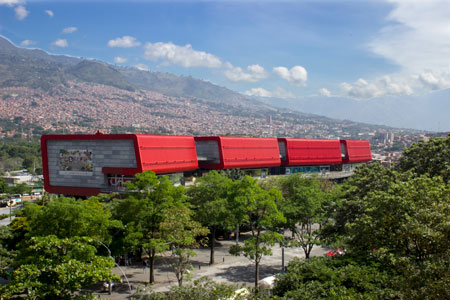Having a hard time breaking the ice?
Unsure of what questions to ask Medellin women?
Well...
Understanding Colombian history— more on the history of Medellin — helps you understand the culture and traditions of Medellin; moreover, it’s seen as a romantic gesture that reflects your sincerity plus intelligence.
Intelligence in a man is a trait women in Medellin can’t resist!
We got your back.
We have gathered all that you need to know about the history of Medellin.

 Get to know the History of Medellin
Get to know the History of MedellinMedellin (Me-de-yin) is located in Aburrá Valley, where Amerindian groups have inhabited since the 5th century B.C.
In August 1541, Marshall Jorge Robledo noticed a valley at the distance from a place known today as Heliconia; then, he sent Jerónimo Luis Tejelo to explore it.
In the Chronicles on the Indies, around 3,000 natives fiercely resisted the Spaniards’ arrival in their territory. The natives engaged in agriculture, textile, pottery, and goldsmithing among many others.
The natives’ textile decorations led the Spaniards to change the valley’s name to Aburrá— a native term which translates to Painters— which was previously named as the Valley of Saint Bartholomew.
Spanish rule and diseases from Europe caused the extinction of the natives from the Aburrá Valley; moreover, the natives’ fierceness and lack of wealth discouraged the Spaniards’ immediate settlement.
Historians believe that among the early settlers were Spanish Jews, who were expelled or had fled Spain, when the Spanish Crown began systematically persecuting Jews.
In 1574, Antioquia’s Cabildo gave Don Gaspar de Rodas three square miles of land – out of the four he requested – to get him started with the agricultural business of cattle and crops to supply food in Aburrá Valley.
In March 1616, Don Francisco de Herrera y Campuzano established the first European settlement, with 80 natives, in the southern part of Aburrá Valley. It is known today as El Poblado, where early developments started.
Since then, the population has started to grow. Aburrá Valley became the source of food for the surrounding areas.
In 1646, Colonial Law ordered racial segregation among the natives, mulattos, mestizos, and Spaniards. Interracial marriage of Spaniards and the former racial categories was deeply frowned upon.
The racial segregation and prohibition of interracial marriage caused the formation of the identity Paisa, also known as Antioqueños. It refers to the people of the Antioquia region. Scientific studies considered ‘Paisas’ as a genetically-isolated population.
The once provincial capital, known today as Santa Fe de Antioquia, gradually lost its importance because the traders and prominent people moved to Aburrá Valley.
Disputation regarding settlements and governance between the ruling government of Santa Fe de Antioquia and distant areas occurred.
In 1674, Queen Regent Mariana of Austria authorized the formation of settlements and cities. The following year, she founded Villa de Nuestra Señora de la Candelaria de Medellín.
Within the year, the first census was taken; there were 3,000 people and 280 families.
Between 1786 and 1787: around 14,500 people and 240 families.
In 1808: around 15,350 people and 360 families.
In 1801, King Charles IV of Spain allowed the establishment of a college-convent in Medellin; two years later, the Royal College of the Franciscans was founded.
It was the foundation for education in the city and initially offered degrees in Latin, Grammar, Philosophy, and Theology.
In 1821, it was renamed Colegio De Antioquia; yet by 1901,it became University of Antioquia as it is known today.
The University of Antioquia has opened a trade and arts school, the first vocational school, the first regional botanical garden and cultural radio station in South America. It became a national and international cultural center.
In 1826, Villa de Nuestra Señora de la Candelaria de Medellín became the capital of Antioquia. Soon after, the city’s name shortened to Medellin.
Between 1899 and 1902, the Thousand Days War halted the industrial development of the city, despite not directly affecting the region.
In 1905, the Medellin population count rose to 60,000.
Under President Rafael Reyes, the city resumed its industrial development and the Chamber of Commerce was founded, which created and implemented the regional transport project that connected Medellin to Bogota, Cali and Littoral.l
In 1923, Medellin's first airport— Enrique Olaya Herrera Airport— was built.
In 1950s, the local government, industrialists, traders, and architects created the Medellin Master Plan (MMP) that would make the city the first metropolitan area in Colombia.
Airport, Railways, Gold-based, and Coffee trade has massively contributed to the city’s economic growth. The worldwide bonanza of coffee prices increased the production of coffee, and opened the doors to international trade. Coffee became the main export of Colombia.
The profits were invested and gambled in the textile industry with huge success because it turned the city into Colombia’s second industrial zone and the home of the leading textile industry in South America.
By 1970, the Medellin population count exceeded 1,000,000. It led to new problems: high-unemployment rate, lack of services for the poor, and violence.
During the 1970s to 1980s, a ruthless paisa named Pablo Escobar, the King of Cocaine, founded Medellin Cartel.
It is a terrifyingly violent and highly-organized drug cartel in Colombia that smuggled kilos of cocaine in Europe, Canada, the United States, Central and South America.
It supplied about 80% of United State’s cocaine market and controlled 90% of the global cocaine market.
With about 300 kilos of cocaine per month and up to $60 million of daily drug profits, it is no surprise that by 1982: cocaine exceeded coffee.
Medellin Cartel took over Colombia through corruption, greed, and fear. Its members have killed drug lords, civilians, journalists, judges, police officials, government officials and Luis Carlos Galán - a leading presidential candidate in 1990 who openly declared himself an enemy of the drug cartels.
In 1989, Medellin Cartel bombed Avianca Flight 203 that killed 107 people when it exploded over the town of Soacha.
Medellin became the murder capital of the world because of drug cartels, right-wing paramilitaries, left-wing guerrillas and criminal groups pushing the city’s homicide rate to the roof.
The war against Drugs broke off, which led to Pablo Escobar’s death in December 1993.
In late 2003, peace agreements between illegal armed groups and Medellin occurred through giving amnesty to most of those who put their guns down.
It was reported that gang members had sought therapy sessions, while hitmen sought guitar lessons.
In 2004, Mayor Sergio Fajardo’s administration focused on education and community-building. He led a comprehensive plan in transforming Medellin, which follows:
The homicide rate has dropped by more than 80%.
In 2012, Medellin was nominated for Most Innovative City of the Year because of the huge progress that has happened since then.
The Medellin government launched Medellin: Adelanta y Sin Reversa campaign, that translates Medellin: Forward and without reverse.
Today, Medellin is among the safest cities in Colombia. It has been named as “The City of Eternal Spring” with history and destinations to take pride of.
Your insights on the Medellin portion of Colombian history help in gaining a deeper appreciation of Colombian tourism.
There’s nothing sweeter than to date Medellin women in their homeland. Why not create memories for a lifetime through indulging at these famous destinations in Medellin?
We listed below the breathtaking destinations— among the best in Colombian tourism— that will bring out the best of you.
Guatape is an oddly outstanding destination. It is about 2 hours away from Medellin. We suggest avoiding holidays and weekends to get a fully pleasant experience.
Laguna de Guatape has lush and green surroundings. Going on a boat trip will give you a more intimate look at the magnificent natural beauty.

 Climb the El Penol to see the magnificent view of Guatape.
Climb the El Penol to see the magnificent view of Guatape.It is best seen from the top of El Peñol— a main landmark that is a giant rock with about 700 steps. Climbing El Peñol is at the top when it comes to the things to do in Colombia— you won’t regret every step of the way.
Among the famous attractions in Guatape is Pablo Escobar’s abandoned Mansion— La Manuela, where you can play paintball and capture the flag game.

 Check out the artworks surrounding Plazoleta de los Zocalos.
Check out the artworks surrounding Plazoleta de los Zocalos.Columbia has a reputation for producing mild and well-balanced coffee beans; so after a full-day trip, don’t forget to enjoy excellent coffee from Café La Viña.

 Visit Jardin Botanico de Medellin to see various Orchid species.
Visit Jardin Botanico de Medellin to see various Orchid species.Take a look at over a thousand of various living species in the Jardin Botanico. Escape the busy world by exploring the most famous Medellin botanical garden— for free.
Explore each of the following zones that is full of life:
Women in Medellin would love to experience a pleasant atmosphere of people celebrating life, so we suggest for you to have picnics in this paradise.
When the day hasn’t ended, head over to Parque Explora.

 Immerse yourself in the world of Science at Parque Explora.
Immerse yourself in the world of Science at Parque Explora.Parque Explora is conveniently located next to the Jardin Botanico de Medellin. Exploring this very interactive science museum is noted as second in the things to do in Colombia.
You can find a large aquarium with a wide variety of fishes, a terrarium containing reptiles with their history; then, an outdoor dinosaur exhibition.
Below are four main halls of Parque Explora that will stimulate your mind:
Women in Medellin would love to hear about the things you know of and would find your curiosity in various areas— that Parque Explora can help you with— very attractive.
We warn you to be careful when bringing up Pablo Escobar and the Narcos TV series— though it helped Colombia tourism— because local paisas prefer not to talk openly about it. Escobar has caused suffering to other paisas, who are putting their best efforts in burying the past.

 Travel around Medellin through Medellin Metrocable.
Travel around Medellin through Medellin Metrocable.Built in 2004, you can expect a clean, secure and scenic ride with the Medellin Metrocable. Immerse yourself in the excellent view the ride offers because you’ll get insights on the everyday life of people in the small towns, including the once infamous neighborhoods, in the mountains.
Medellin Metrocable is the world’s first aerial tram system. “It was a blessing from God,” said Rosalba Restrepo, President of the Community Neighborhood Committee. It has connected the city center to the once neglected areas, which led to social transformation and increased economic growth.
It is best to take the ride in the morning. We suggest for you to avoid rush hours and bad weather; also, to be careful with your things, and of solicitors around.